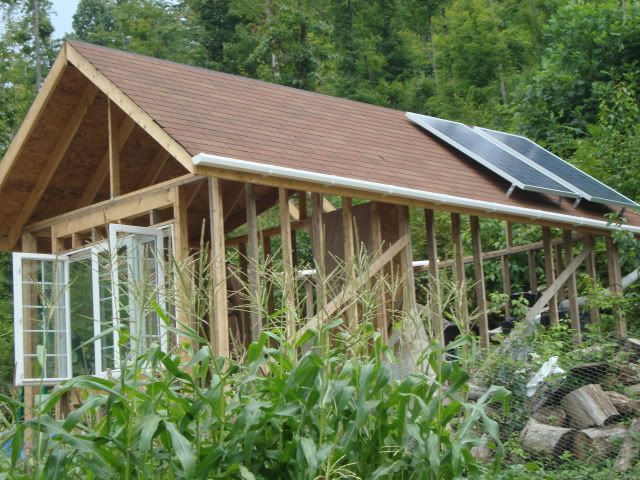Environment & Energy
Related: About this forumNo easy fix for eastern US storm power outages as heat wave persists
Climate change and economic collapse are beginning to push our ability to respond to these events.
The answer, it turns out, is complicated: Above-ground lines are vulnerable to lashing winds and falling trees, but relocating them underground involves huge costs — as much as $15 million per mile of buried line — and that gets passed onto consumers.
With memories of other extended outages fresh in the minds of many of the more than 735,000 customers who still lacked electricity Wednesday, some question whether the delivery of power is more precarious than it used to be.
Advertise | AdChoices
"It's a system that from an infrastructure point of view is beginning to age, has been aging," said Gregory Reed, a professor of electric power engineering at the University of Pittsburgh. "We haven't expanded and modernized the bulk of the transmission and distribution network."The ongoing outage meant no July 4 holiday for thousands of utility workers who scrambled to restore power across the region.
http://usnews.msnbc.msn.com/_news/2012/07/04/12561717-no-easy-fix-for-eastern-us-storm-power-outages-as-heat-wave-persists?lite
Demeter
(85,373 posts)and that just isn't cost-effective. What are you suckers all going to do? Put photovoltaics on your roofs and windmills in your back yards?
Cut back on electricity?
The utilities are betting not. That's what a monopoly is all about.
phantom power
(25,966 posts)that the govt could hire to fix this stuff, and jump-start some economic demand....

hunter
(38,299 posts)... first you profit by running a business into the ground, by diverting maintainence funds, by laying off employees, by hiring low pay unqualified people, etc., etc..., and then you profit again from emergency government subsidies to build the business back up.
If you own enough politicians and government regulators you can repeat this process indefinitely.
ladjf
(17,320 posts)Kolesar
(31,182 posts)Bury everything, the sewers, water, gas, electric and networks before the streets are laid. Refitting is a fright. I have a struggle to get the idiots running our city to put in sanitary sewers.
happyslug
(14,779 posts)Due to a series of very severe snow storms in the 1880s, and the subsequent loss of Telegraph communications, Congress demanded all future electrical systems be underground. No enforcement mechanism was included so it was NOT done, but putting cables underground has been the preferred placement since the 1880s.
Now prior to 1862, underground placement of electrical systems (including Telegraphs cables) was impossible, but in that year a company came up with a portable battery wagon for use by the Union Army then engaged in the Civil War. The portable battery was a complete failure, but it came with the first insulated electrical cables, which were widely adopted. Thus by the 1860s it was possible to put electrical cables on the ground and even underground.
The problem is one of costs. While I was doing research on Public transportation most researched indicated that for the cost to build anything on the surface for a dollar, it costs four dollars for anything above ground (bridges are more expensive depending on the length of the bridge) AND ten dollars for anything underground (Using cover and fill technology, drilling a tunnel is even higher).
On the other hand, tunnels, if build right, can last forever with minimum maintenance (Maintenance MUST be done, but if done can last forever) but anything above ground cost more to maintain which includes replacing parts that hold it up (i.e. the beams and other structural parts MUST be replaced, painted or otherwise maintained.
Given the nature of most electrical transmission lines, I suspect the costs involved with above ground cables is the cheapest, the electrical wires need NOT have any insulation if contact with the ground is avoided (Birds can even perch on them, as long as they do NOT touch each other or anything else that causes a connection to the ground). It is the cheapest way to build electrical transmission lines (even if the line is insulated). On the other hand, underground you have to cut a hole into the ground, install an insulated line, then fill it over. That is much more expensive then just laying the line on the ground (Which I suspect would be the electrical companies first choice, if they could get away with it) or building towers and stretching the wires between the towers.
Thus, while Congress MANDATED underground electrical lines in the 1880s, most such lines were viewed as under exclusive STATE or LOCAL control and thus NOT required to be underground under that law, if the law was ever enforced.
This was so while known that most suburbs built since the 1970s have underground electrical hookups. Older suburbs and inner cities AND rural areas (and in my home area of Western Pennsylvania, the old coal patches and other older towns from the 1880s to the 1930s among the post WWII suburbs) tend to have electrical poles. Rural Electric Co-ops also tend to have Poles instead of anything underground, again to keep costs of installation down. Underground electrical system has been the rule since the 1970s even in urban areas, but these rules only apply to new housing NOT to existing housing or existing electrical transmission lines.
My point is moving electrical wires underground has been known as the best way to preserve electrical transmission during bad weather and other disasters since at least the 1880s as seen by Congress passage of the above mentioned act. The electrical companies have refused to do so EXCEPT WHEN THE STATE OR LOCAL GOVERNMENT FORCED THEM TO DO SO (as can be seen in the post 1970s Suburbs that locally required all electrical systems installed into new homes be underground, most older suburbs and cities have similar rules, but no requirement as to existing homes).
I hate to say this, but Congress needs to mandate that existing electrical lines be moved underground AND provide the money to do so.
2on2u
(1,843 posts)to place buried cable.
http://www.houselogic.com/home-advice/saving-energy/tax-credits-residential-fuel-cells/

A residential fuel cell system, which is about as big as a refrigerator, can produce electricity, heat, and hot water for a home. Image: ClearEdge Power
Read more: http://www.houselogic.com/home-advice/saving-energy/tax-credits-residential-fuel-cells/#ixzz1zmrSyoK0
NickB79
(19,214 posts)Which doesn't exactly qualify for decentralization in the way you framed it. Sorry.
2on2u
(1,843 posts)FedUpWithIt All
(4,442 posts)